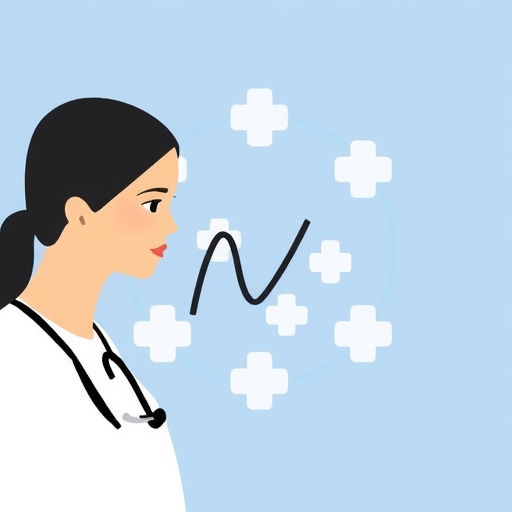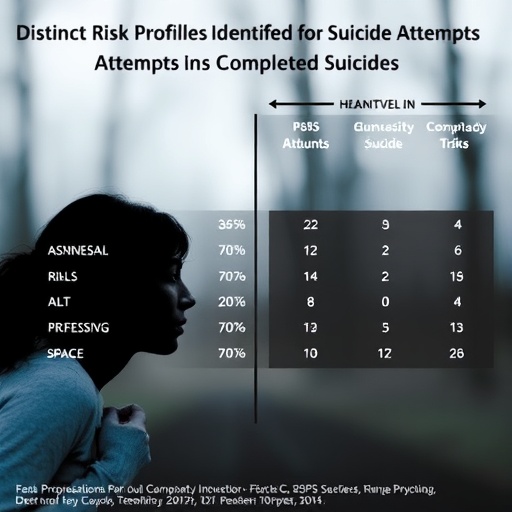In recent years, the healthcare sector has witnessed a growing recognition of the pivotal role nurses play in advocating for patient needs and influencing systemic change. The TRIL Nurse Advocacy Model, pioneered by a group of researchers including Abraham, Bosomtwe-Duker, and Agyare, represents a significant advancement in articulating how nurses can transition from bedside interactions to impactful system-level advocacy. This model is not merely theoretical; it is grounded in empirical research and aims to establish a framework that enhances the integration of nursing perspectives into healthcare policy and practice.
The TRIL Model, which stands for Transformational, Relational, Integrative, and Leadership, seeks to empower nurses to take on advocacy roles that extend beyond their clinical duties. By employing transformational leadership strategies, nurses can inspire change within their teams, departments, and even organizations. Such leadership is characterized by the ability to motivate and engage colleagues around a shared vision of improved patient care and outcomes. This shift towards leadership is crucial, as it recognizes that nurses are not just caregivers but also vital contributors to healthcare delivery systems.
Moreover, the relational aspect of the TRIL Model highlights the importance of interpersonal connections in advocacy. Nurses frequently engage with patients, families, and interdisciplinary teams, allowing them to gather insights into the challenges faced within the healthcare environment. These relationships provide a foundational understanding that informs advocacy efforts, reinforcing the idea that effective advocacy is rooted in compassion and understanding. By fostering strong relationships, nurses can amplify the voices of those they serve, making a compelling case for necessary changes at both the institutional and systemic levels.
Integrative practices form another cornerstone of the TRIL Model. This concept emphasizes the need for nurses to connect various elements of the healthcare system, creating a holistic approach to patient care and advocacy. The ability to integrate knowledge and skills from multiple domains empowers nurses to address complex healthcare challenges more effectively. For example, by synthesizing clinical expertise with an understanding of healthcare policies, nurses can craft strategies that not only improve patient care but also advocate for systemic changes to the structures that govern healthcare delivery.
Leadership is not solely about hierarchical position, and the TRIL Model underscores the significance of informal leadership as well. Many nurses operate in environments where formal authority may not be granted, yet they can influence change through peer relationships and collaboration. This idea serves to democratize leadership within healthcare settings, encouraging every nurse to recognize their potential as advocates for patients and catalysts for change. Such an approach aligns with contemporary views of leadership as a collective responsibility shared across teams rather than held exclusively by those in higher positions.
As the TRIL Nurse Advocacy Model is introduced into healthcare systems, early adopters are already observing evidence of its impact. Some institutions implementing the model have documented improvements in patient satisfaction and care quality. When nurses are empowered to act as advocates, they often identify needs and gaps in care that might otherwise go unaddressed. This shift can lead to the development of new protocols, improved resource allocation, and other innovative solutions that directly enhance patient outcomes.
Furthermore, the TRIL Model can serve as a vital bridge between clinical practice and health policy advocacy. Nurses, well-versed in the intricacies of patient care, possess unique insights that can inform policymaking. Their direct experiences with patients provide data necessary for demonstrating the efficacy of new approaches or articulating the need for changes in healthcare regulations. By engaging more deeply in policy discussions, nurses can advance practice standards and contribute to legislative initiatives that promote sustainable healthcare solutions.
Educational institutions are also recognizing the implications of the TRIL Model for nursing education. Integrating advocacy training into nursing curricula ensures that upcoming generations of nurses are equipped not just with clinical skills, but also with the knowledge and tools to advocate effectively for patient care changes. Educators can foster an environment where students are inspired to adopt advocacy as an essential component of their nursing identity.
The importance of the TRIL Nurse Advocacy Model also extends to the future of healthcare. As it gains traction, the model can lead to broader systemic changes that favor a more equitable, efficient, and patient-centered approach to healthcare delivery. By cultivating a workforce of nurse advocates, the entire system can begin to pivot toward practices that prioritize the needs and preferences of patients, aligning healthcare services more closely with desired outcomes.
In a world where healthcare complexities and challenges continue to evolve, innovation is paramount. The TRIL Model embodies a progressive approach, recognizing that nurses have the potential to influence change in ways that are transformative not only for individual patients but also for communities and healthcare systems as a whole. As research continues to support the efficacy of this model, it is likely to inspire further exploration and integration of advocacy in different healthcare contexts, promoting a more sustainable and impactful healthcare landscape.
Ultimately, the TRIL Nurse Advocacy Model sheds light on the critical intersection of nursing practice and advocacy, challenging assumptions about the roles of nurses beyond patient care. This model encapsulates the shift toward empowering nurses as leaders who can bridge the gap between patient needs and healthcare systems, ensuring that the voices of those receiving care are heard at every level. Its implications are profound, resonating throughout educational programs, institutional policies, and potentially reshaping the healthcare narrative itself.
As the dialogue around nursing advocacy continues to flourish, it becomes increasingly clear that models like TRIL are not just theoretical constructs but rather frameworks for actionable change. These efforts will undoubtedly catalyze a transformation in how healthcare systems function, moving toward a more sustainable, responsive, and empathetic paradigm of care that prioritizes collaboration, integration, and advocacy.
In conclusion, the TRIL Nurse Advocacy Model serves as a landmark initiative in clarifying and enhancing the role of nurses in the healthcare ecosystem. By embracing leadership, fostering relationships, integrating practices, and advocating effectively, nurses can catalyze the changes needed to support sustainable healthcare. As this model gains wider acceptance and implementation, the future looks promising for both nurses and the patients they serve.
Subject of Research: Nurse Advocacy Model
Article Title: From bedside to system change: the TRIL nurse advocacy model for sustainable healthcare
Article References: Abraham, S.A., Bosomtwe-Duker, D., Agyare, D.F. et al. From bedside to system change: the TRIL nurse advocacy model for sustainable healthcare. BMC Nurs 24, 1224 (2025). https://doi.org/10.1186/s12912-025-03870-8
Image Credits: AI Generated
DOI: 10.1186/s12912-025-03870-8
Keywords: Nurse Advocacy, Healthcare System Change, Transformational Leadership, Relational Advocacy, Integrative Practices, Policy Advocacy, Patient-Centered Care, Sustainable Healthcare.
Tags: advocating for patient needsempowering nurses in healthcareenhancing patient care through advocacyintegrative approaches to nursinginterdisciplinary collaboration in nursingnurse advocacy modelnursing leadership and systemic changenursing’s role in healthcare policyrelational advocacy in healthcaresystem-level advocacy for nursestransformational leadership in nursingTRIL Nurse Advocacy Model





